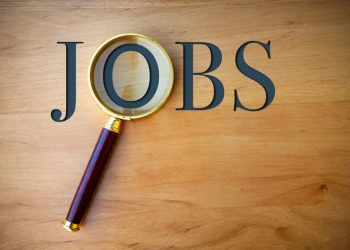RISMEDIA, August 6, 2009-(MCT)-The U.S. economy has suffered its biggest shock since the Great Depression. Trillions of dollars in wealth has vanished. Businesses are struggling, and state and local governments grapple with huge and painful shortfalls.
Still, last week’s news-including the surprising surge of demand for the “Cash for Clunkers” car-buying incentives-suggested that the economy is finally turning a corner. As sure as sunshine follows storms, recoveries follow downturns.
But what kind of recovery? Ironically, the answer will be shaped partly by U.S. consumers-the same consumers whose excesses helped fuel the last quarter-century of growth and contributed to its crashing end. If they do not increase their spending soon, the economy’s recovery is likely to be slower and less vigorous. It may take years to unravel what caused the panic of 2008-09, but it already seems clear that consumers share some of the blame, even if they had plenty of enablers within the finance industry. Lured by easy credit and inexpensive products from Asia, and bolstered by buoyant home prices and stock portfolios that made them feel wealthy, U.S. consumers quit saving and went shopping.
As the economy grew, the personal-savings rate-how much Americans saved as a percentage of their disposable incomes-drifted ominously downward. As the housing bubble neared its peak, the 2005 savings rate dipped below 2%, as it did again in ’07 and early ’08. Those figures, based on revised data released by the Bureau of Economic Analysis, are not as stunning as previous reports showing that the savings rate had dropped to zero in April 2008. But they still present a stark contrast to what happened next, after gasoline prices hit $4 a gallon, credit markets seized up, and former President George W. Bush beseeched Congress to approve billions in bank bailouts.
Whatever their past sins, American consumers took notice. Like nonbelievers scared into prayer or drug addicts scared straight, they began repairing their personal and household balance sheets.
The BEA reported that the savings rate had climbed to 5.2% in the quarter that ended June 30, a rate not seen in more than a decade. Will that newfound frugality be a drag on the recovery-what economists call “the paradox of thrift”?
In interviews last week, economists, marketing experts, psychologists and consumers said it was too soon to say whether consumers would stick with their new ways, but the anecdotal evidence bears out the numbers.
Barbara White, a Philadelphia city worker said she was boosting her savings in every way possible because of financial uncertainty-particularly her worries about her union’s lack of a contract and the possibility of a pay freeze. “If I want to purchase a new car, I can’t purchase a new car. If I want to go on a vacation, I really can’t go on a vacation,” White said. “My life is in limbo.”
Michael Przchowicz, who manages a Roxborough tavern, said he had to lay off two of his nine employees and work extra hours because of the downturn. Even with that, he said, he had lost about 30% of his income because his customers, too, were cutting back. “People would rather sit at home and barbecue,” Przchowicz said, “or they’re saving to go down to the Shore.”
Such cutbacks are occurring across all income levels.
Jamie Joffe of Lafayette Hill owns a public-relations firm and is married to the president of a trust company, but the recession has made her more mindful of her spending-and perhaps a bit disdainful of contemporaries she calls “big livers.” A year ago, Joffe said, she “would have never looked twice” at the family’s bill for phone and cable service. “I just renegotiated and am saving $100 or so a month,” she said.
Will such attitude adjustments last? Economists say some long-term changes would be beneficial-as long as consumers do not overdo them, which happened to some who lived through the Great Depression. “My grandmother would darn socks for two hours rather than go out and buy another pair for $2. There’s no logic to that,” said Justin Wolfers, an economist at the University of Pennsylvania’s Wharton School.
Scott Rick, a marketing professor at the University of Michigan who studies spending habits, expects little long-term change among the vast majority of consumers who have not lost jobs and retain access to credit. “Most people will bounce back quite enthusiastically to their default feelings toward spending,” said Rick, who uses neurological data to examine decision-making and classifies consumers into “tightwads,” “spendthrifts,” and those in between. Rick said concerns about U.S. consumers’ profligacy might be overblown. “People who rack up debt get a lot more attention,” he said, “but there are a lot of tightwads out there”-about 25% of the population vs. 15% who are spendthrifts. Nor has the financial crisis altered that split as he continues to study consumers. “I was expecting huge changes, and I’ve tested and retested people to see how they’ve reacted to the crisis,” Rick said. “I had to recheck the data, because I was surprised. The numbers weren’t moving.”
To Mark Zandi, chief economist at Moody’s Economy.com in West Chester, Pa., some long-term adjustments would be welcome. He points out that the real historical aberration is the decline in savings, not its return to a rate above 5%. The change was mirrored by a growth in consumer spending from 62% of gross domestic product in 1980 to about 70% this decade. For the economy, Zandi said, the recent savings growth is a blessing, not a curse-he would like to see it climb above 8%. “If savings rates stay where they are, then spending growth will match income growth, and consumers can contribute their part to the recovery,” he said.
(c) 2009, The Philadelphia Inquirer.
Distributed by McClatchy-Tribune Information Services.










